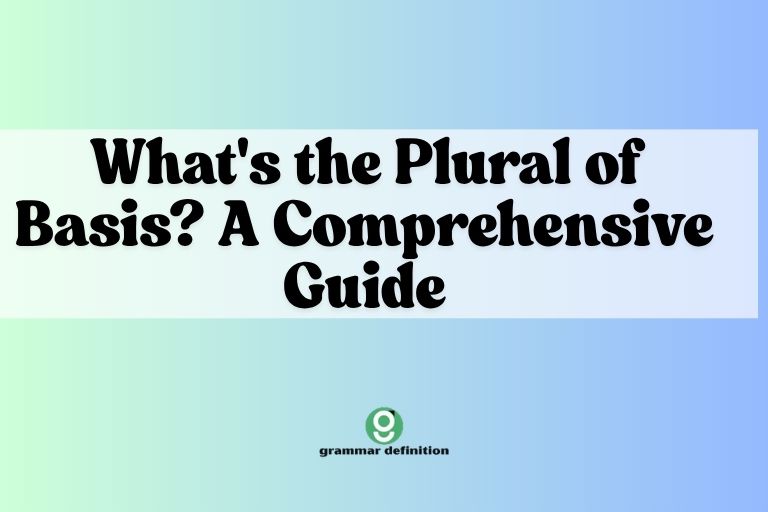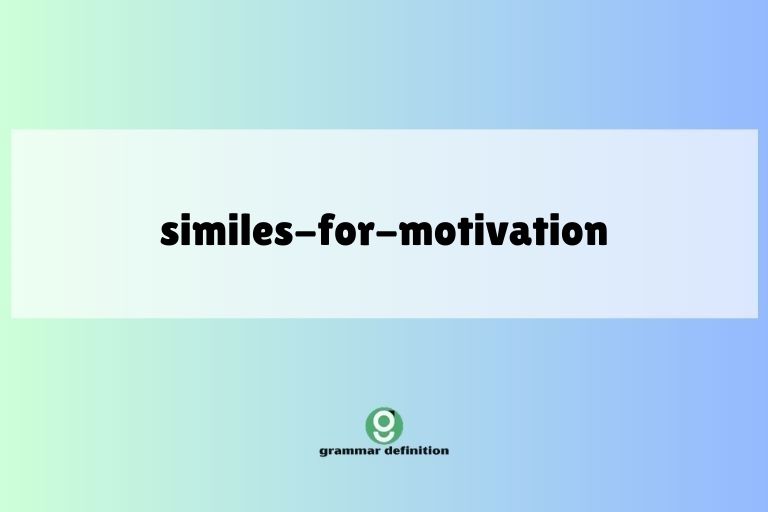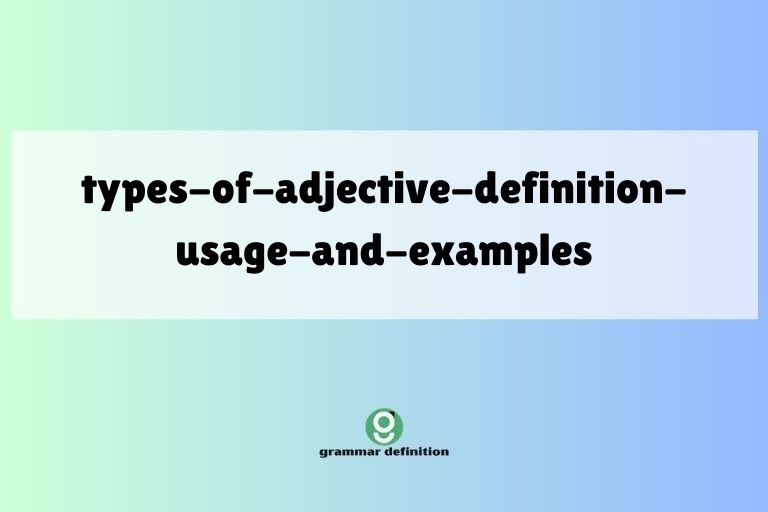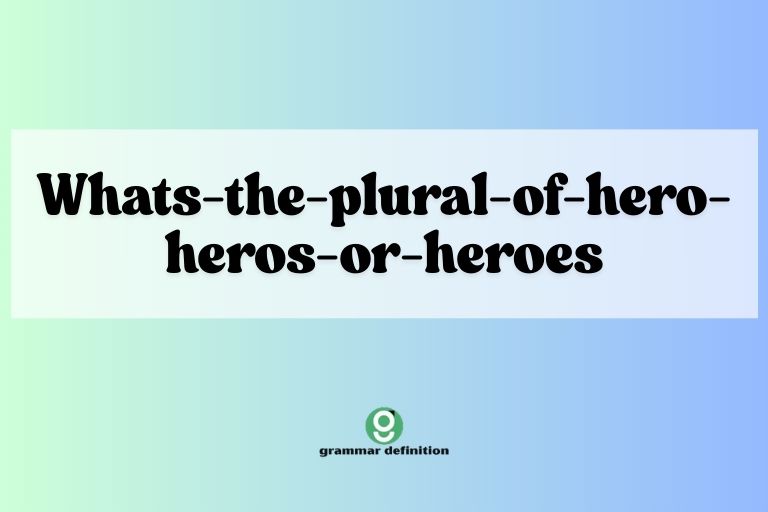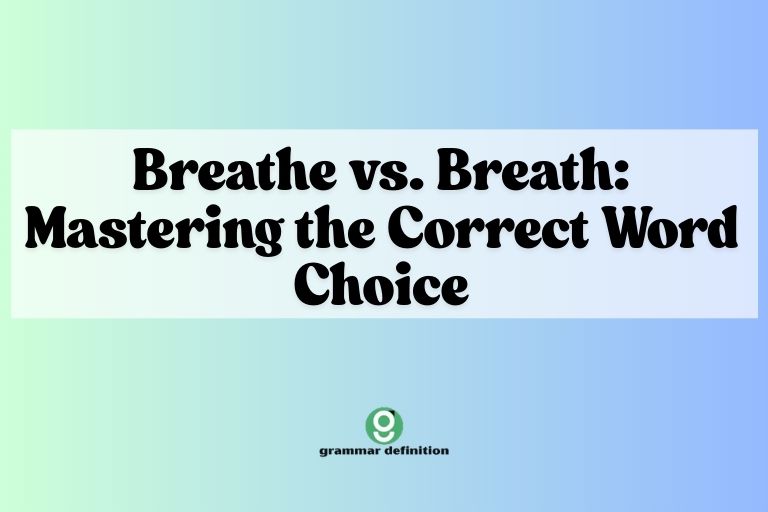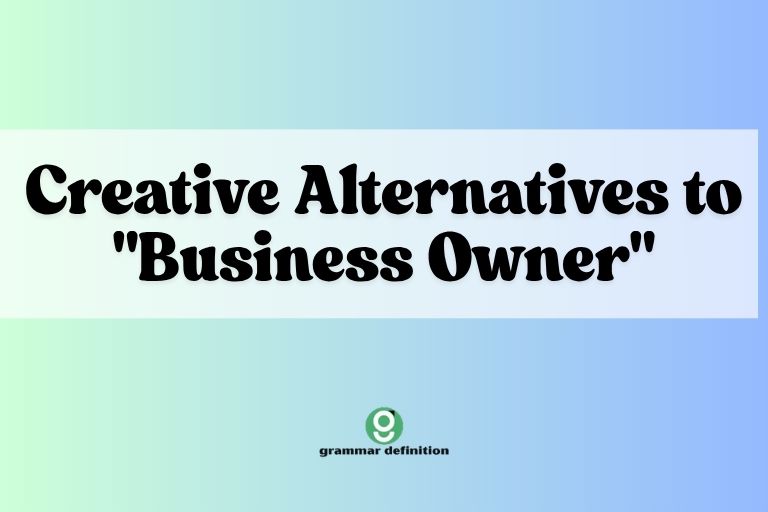Understanding Ellipsis: Definition, Usage, and Examples
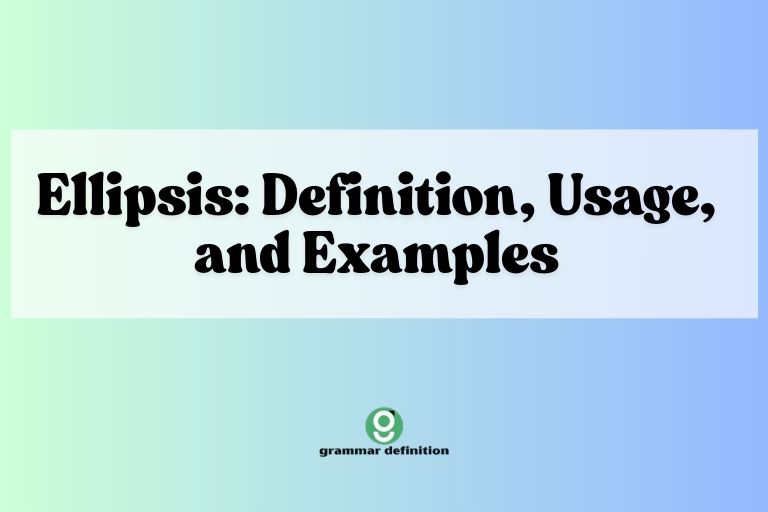
Ellipsis, a fascinating and frequently used feature in English grammar, allows us to omit words or phrases that are understood from the context. Mastering ellipsis enhances fluency, avoids unnecessary repetition, and makes our writing and speech more concise and natural.
This article provides a comprehensive guide to ellipsis, covering its definition, types, usage rules, common mistakes, and advanced applications. Whether you’re an English language learner, a student, or simply someone looking to improve your grammar skills, this guide will equip you with the knowledge and practice you need to confidently use ellipsis in your communication.
Table of Contents
- Definition of Ellipsis
- Structural Breakdown of Ellipsis
- Types of Ellipsis
- Examples of Ellipsis
- Usage Rules of Ellipsis
- Common Mistakes with Ellipsis
- Practice Exercises
- Advanced Topics in Ellipsis
- Frequently Asked Questions (FAQ)
- Conclusion
Definition of Ellipsis
Ellipsis is the omission of words or phrases from a sentence because they are either unnecessary or can be understood from the context. It’s a linguistic device that contributes to conciseness and efficiency in communication. In simpler terms, it’s about leaving out what’s obvious. Ellipsis makes sentences shorter and often more natural-sounding, particularly in informal speech and writing. Understanding ellipsis involves recognizing when and how words can be omitted without causing confusion or ambiguity.
Ellipsis is used extensively in both spoken and written English. It helps to avoid redundancy and creates a smoother flow of information.
Without ellipsis, our sentences would often be longer and more repetitive, making communication less efficient. Recognizing and using ellipsis effectively is a key aspect of mastering English grammar and improving overall communication skills.
It requires a good understanding of sentence structure and context.
Structural Breakdown of Ellipsis
Understanding the structure of ellipsis involves recognizing the elements that are typically omitted and the conditions under which omission is permissible. Ellipsis typically occurs when the omitted elements are recoverable from the preceding or following context.
This recoverability is crucial; otherwise, the sentence becomes ambiguous and difficult to understand. The structural integrity of the remaining sentence must also be maintained, ensuring that it remains grammatically correct even with the missing elements.
Here’s a breakdown of the key structural elements involved in ellipsis:
- Antecedent: The preceding word, phrase, or clause that provides the information necessary to understand the omitted element.
- Omitted Element: The word, phrase, or clause that is deliberately left out of the sentence.
- Remaining Structure: The portion of the sentence that remains after the ellipsis has occurred, which must still be grammatically sound.
For example, in the sentence “I like coffee, and she does too,” the omitted element is “like coffee.” The antecedent is the phrase “I like coffee,” which provides the necessary context to understand what “she does too” refers to. The remaining structure, “she does too,” is grammatically correct on its own, even though it’s incomplete without the context.
This is a key aspect of how ellipsis functions.
Types of Ellipsis
Ellipsis can be categorized into several types based on the grammatical elements that are omitted. Each type has its own specific characteristics and usage patterns.
Understanding these different types can help you identify and use ellipsis more effectively in your own writing and speech.
Nominal Ellipsis
Nominal ellipsis involves the omission of a noun or noun phrase. This often occurs when the noun is understood from the context or has been previously mentioned. Nominal ellipsis is common in comparative sentences and in situations where the noun is generic or non-specific.
Example: “I bought two apples, and she bought three.” (The noun “apples” is omitted after “three.”)
Verbal Ellipsis
Verbal ellipsis involves the omission of a verb or verb phrase. This is often seen in auxiliary verbs and in situations where the verb is identical to the one in a previous clause. Verbal ellipsis helps to avoid repetition and makes sentences more concise.
Example: “He has been to Paris, and she has too.” (The verb “been to Paris” is omitted after “has.”)
Clausal Ellipsis
Clausal ellipsis involves the omission of an entire clause. This type of ellipsis is common in informal speech and writing, where the context makes the missing clause easily understood. Clausal ellipsis can significantly shorten sentences and make them more direct.
Example: “Want to go to the movies?” (The clause “Do you” is omitted.)
Sluicing
Sluicing is a type of ellipsis where a clause is reduced to a wh-word (who, what, where, when, why, how) and possibly some accompanying words. The rest of the clause is understood from the context. Sluicing is often used to ask follow-up questions or to express uncertainty.
Example: “Someone called, but I don’t know who.” (The rest of the clause “who called” is omitted.)
Gapping
Gapping is the omission of a verb in coordinate clauses. It typically occurs in sentences with parallel structures. The omitted verb is usually located in the second or subsequent clause and is identical to the verb in the first clause.
Example: “John likes coffee, and Mary tea.” (The verb “likes” is omitted in the second clause.)
Stripping
Stripping involves the omission of almost everything in a clause except for one or two elements, often with an adverbial modifier. Stripping is used to express agreement, disagreement, or surprise in a concise manner.
Example: “I’m going to the party, but probably not.” (Almost the entire clause is omitted, leaving only “probably not.”)
Examples of Ellipsis
To further illustrate the concept of ellipsis, here are several examples categorized by type. These examples will help you understand how ellipsis works in different contexts and how it can be used to make your writing and speech more concise and natural.
Nominal Ellipsis Examples: The following table demonstrates nominal ellipsis in various contexts. Notice how the omitted noun is easily understood from the preceding context.
| Sentence with Ellipsis | Full Sentence (Without Ellipsis) | Omitted Noun |
|---|---|---|
| I have two cats, and she has three. | I have two cats, and she has three cats. | cats |
| He ordered a large pizza, and I ordered a small. | He ordered a large pizza, and I ordered a small pizza. | pizza |
| She bought the red dress, and I bought the blue. | She bought the red dress, and I bought the blue dress. | dress |
| We need more chairs; can you get some? | We need more chairs; can you get some chairs? | chairs |
| I prefer green apples, but he prefers red. | I prefer green apples, but he prefers red apples. | apples |
| They have a new car, and we have an old. | They have a new car, and we have an old car. | car |
| She wanted the chocolate cake, but I wanted the vanilla. | She wanted the chocolate cake, but I wanted the vanilla cake. | cake |
| He read the first chapter, and she read the second. | He read the first chapter, and she read the second chapter. | chapter |
| We saw two birds, and they saw several. | We saw two birds, and they saw several birds. | birds |
| I need to buy some stamps; do you need any? | I need to buy some stamps; do you need any stamps? | stamps |
| She has a large garden, and I have a small. | She has a large garden, and I have a small garden. | garden |
| He likes black coffee, and she likes white. | He likes black coffee, and she likes white coffee. | coffee |
| We watched the first movie, and they watched the second. | We watched the first movie, and they watched the second movie. | movie |
| I have a new phone, and she has an old. | I have a new phone, and she has an old phone. | phone |
| They bought new shoes, and we bought used. | They bought new shoes, and we bought used shoes. | shoes |
| She prefers iced tea, and he prefers hot. | She prefers iced tea, and he prefers hot tea. | tea |
| I ordered the chicken salad, and she ordered the tuna. | I ordered the chicken salad, and she ordered the tuna salad. | salad |
| We saw two deer, and they saw three. | We saw two deer, and they saw three deer. | deer |
| He has a fast car, and she has a slow. | He has a fast car, and she has a slow car. | car |
| She likes big dogs, and I like small. | She likes big dogs, and I like small dogs. | dogs |
Verbal Ellipsis Examples: The following table showcases verbal ellipsis, where verbs or verb phrases are omitted to avoid repetition. The context makes it clear what verb is being referred to.
| Sentence with Ellipsis | Full Sentence (Without Ellipsis) | Omitted Verb/Phrase |
|---|---|---|
| I have been to Italy, and she has too. | I have been to Italy, and she has been to Italy too. | been to Italy |
| He can swim, and she can too. | He can swim, and she can swim too. | swim |
| They should study, and we should too. | They should study, and we should study too. | study |
| She will arrive tomorrow, and he will too. | She will arrive tomorrow, and he will arrive tomorrow too. | arrive tomorrow |
| We must leave now, and they must too. | We must leave now, and they must leave now too. | leave now |
| I would like to go, and she would too. | I would like to go, and she would like to go too. | like to go |
| He is reading a book, and she is too. | He is reading a book, and she is reading a book too. | reading a book |
| They were playing football, and we were too. | They were playing football, and we were playing football too. | playing football |
| She has finished her work, and he has too. | She has finished her work, and he has finished his work too. | finished her work |
| We had already eaten, and they had too. | We had already eaten, and they had already eaten too. | already eaten |
| I am going to the store, and she is too. | I am going to the store, and she is going to the store too. | going to the store |
| He was watching TV, and she was too. | He was watching TV, and she was watching TV too. | watching TV |
| They have been working hard, and we have too. | They have been working hard, and we have been working hard too. | been working hard |
| She will be traveling soon, and he will too. | She will be traveling soon, and he will be traveling soon too. | be traveling soon |
| I can help you, and she can too. | I can help you, and she can help you too. | help you |
| He should apologize, and she should too. | He should apologize, and she should apologize too. | apologize |
| They will attend the meeting, and we will too. | They will attend the meeting, and we will attend the meeting too. | attend the meeting |
| She must finish the project, and he must too. | She must finish the project, and he must finish the project too. | finish the project |
| We would like to thank you, and they would too. | We would like to thank you, and they would like to thank you too. | like to thank you |
| I am excited about the trip, and she is too. | I am excited about the trip, and she is excited about the trip too. | excited about the trip |
Clausal Ellipsis Examples: The table below illustrates clausal ellipsis, where entire clauses are omitted. This is common in informal speech where the meaning is easily inferred.
| Sentence with Ellipsis | Full Sentence (Without Ellipsis) | Omitted Clause |
|---|---|---|
| Want to go for a walk? | Do you want to go for a walk? | Do you |
| Need any help? | Do you need any help? | Do you |
| Going to the store? | Are you going to the store? | Are you |
| See you later! | I will see you later! | I will |
| Sounds good! | That sounds good! | That |
| Ready to order? | Are you ready to order? | Are you |
| Hope to see you again. | I hope to see you again. | I |
| Nice to meet you. | It was nice to meet you. | It was |
| Glad to hear that. | I am glad to hear that. | I am |
| Like some coffee? | Would you like some coffee? | Would you |
| Need a ride? | Do you need a ride? | Do you |
| Enjoy your meal! | I hope you enjoy your meal! | I hope you |
| Having fun? | Are you having fun? | Are you |
| Want some pizza? | Do you want some pizza? | Do you |
| Looking forward to it. | I am looking forward to it. | I am |
| Good to see you. | It is good to see you. | It is |
| Want to come along? | Do you want to come along? | Do you |
| Hope you’re doing well. | I hope you are doing well. | I |
| Planning to travel? | Are you planning to travel? | Are you |
| Going to the beach? | Are you going to the beach? | Are you |
Sluicing Examples: The subsequent table presents examples of Sluicing. The wh-word remains while the rest of the clause is omitted, relying on context for understanding.
| Sentence with Sluicing | Full Sentence (Without Ellipsis) | Omitted Clause |
|---|---|---|
| Someone called, but I don’t know who. | Someone called, but I don’t know who called. | called |
| He went somewhere, but I don’t know where. | He went somewhere, but I don’t know where he went. | he went |
| She bought something, but I don’t know what. | She bought something, but I don’t know what she bought. | she bought |
| They are meeting someone, but I don’t know whom. | They are meeting someone, but I don’t know whom they are meeting. | they are meeting |
| He is angry, but I don’t know why. | He is angry, but I don’t know why he is angry. | he is angry |
| She left, but I don’t know when. | She left, but I don’t know when she left. | she left |
| They did something, but I don’t know how. | They did something, but I don’t know how they did it. | they did it |
| Someone is coming, but I don’t know who all. | Someone is coming, but I don’t know who all is coming. | is coming |
| He said something, but I didn’t hear what. | He said something, but I didn’t hear what he said. | he said |
| She needs something, but I don’t know what for. | She needs something, but I don’t know what she needs it for. | she needs it for |
| They are going somewhere, but I don’t know where to. | They are going somewhere, but I don’t know where they are going to. | they are going to |
| He is talking to someone, but I don’t know who to. | He is talking to someone, but I don’t know who he is talking to. | he is talking to |
| She is waiting for someone, but I don’t know who for. | She is waiting for someone, but I don’t know who she is waiting for. | she is waiting for |
| They are looking for something, but I don’t know what for. | They are looking for something, but I don’t know what they are looking for. | they are looking for |
| He is working on something, but I don’t know what on. | He is working on something, but I don’t know what he is working on. | he is working on |
| She is thinking about something, but I don’t know what about. | She is thinking about something, but I don’t know what she is thinking about. | she is thinking about |
| They are arguing about something, but I don’t know what about. | They are arguing about something, but I don’t know what they are arguing about. | they are arguing about |
| He is planning something, but I don’t know what for. | He is planning something, but I don’t know what he is planning for. | he is planning for |
| She is asking about something, but I don’t know what about. | She is asking about something, but I don’t know what she is asking about. | she is asking about |
| They are deciding something, but I don’t know what on. | They are deciding something, but I don’t know what they are deciding on. | they are deciding on |
Usage Rules of Ellipsis
Using ellipsis correctly requires adherence to certain rules to ensure clarity and avoid ambiguity. These rules govern when and how elements can be omitted from a sentence.
Failing to follow these rules can lead to confusion and misinterpretation.
Here are some key usage rules for ellipsis:
- Recoverability: The omitted element must be easily recoverable from the context. The reader or listener should be able to understand what is missing without difficulty.
- Grammatical Parallelism: In coordinate clauses, the omitted element must be grammatically parallel to the corresponding element in the first clause. This ensures that the sentence remains structurally sound.
- Auxiliary Verbs: When omitting auxiliary verbs, ensure that the remaining sentence retains its grammatical correctness. The auxiliary verb should be recoverable from the preceding context.
- Clarity: Avoid ellipsis if it leads to ambiguity or confusion. If omitting an element makes the sentence difficult to understand, it’s best to include it.
- Formal vs. Informal: Be mindful of the context. Ellipsis is more common in informal speech and writing than in formal settings.
Exceptions and special cases:
- Titles and Headings: Ellipsis is often used in titles and headings to save space and create a concise message.
- Advertising: Advertisements frequently use ellipsis to create catchy slogans and highlight key information.
- Dialogue: In dialogue, ellipsis can be used to mimic natural speech patterns and convey emotions or hesitations.
Common Mistakes with Ellipsis
Even with a solid understanding of ellipsis, it’s easy to make mistakes. Here are some common errors to watch out for, along with corrected examples:
Ambiguity: Omitting elements that are not easily recoverable from the context can lead to confusion.
| Incorrect | Correct | Explanation |
|---|---|---|
| He likes apples, and she. | He likes apples, and she likes oranges. | The omitted element is unclear; it’s not obvious what she likes. |
| I went to the store, and then. | I went to the store, and then I went home. | The omitted action is not clear from the context. |
Grammatical Errors: Incorrectly omitting elements can result in grammatically incorrect sentences.
| Incorrect | Correct | Explanation |
|---|---|---|
| She has been, and he too. | She has been there, and he has too. | The omitted verb phrase is necessary for grammatical correctness. |
| They should, and we. | They should study, and we should too. | The omitted verb is needed to complete the sentence structure. |
Overuse: Using ellipsis too frequently can make your writing or speech difficult to follow.
| Incorrect | Correct | Explanation |
|---|---|---|
| Went to store, bought milk, came home. | I went to the store, bought milk, and came home. | Too many elements are omitted, making the sentence choppy. |
Practice Exercises
Test your understanding of ellipsis with these practice exercises. Identify the type of ellipsis used in each sentence and provide the full sentence without ellipsis.
Exercise 1: Identifying Ellipsis
| Question | Type of Ellipsis | Full Sentence (Without Ellipsis) |
|---|---|---|
| 1. I like coffee, and she tea. | ||
| 2. Want to grab lunch? | ||
| 3. He has been there, and she has too. | ||
| 4. She bought a new car, and he an old. | ||
| 5. Someone called, but I don’t know who. | ||
| 6. Need any help? | ||
| 7. They will arrive tomorrow, and we will too. | ||
| 8. He ordered a large pizza, and I a small. | ||
| 9. Going to the party? | ||
| 10. I have two cats, and she three. |
Answer Key:
| Question | Type of Ellipsis | Full Sentence (Without Ellipsis) |
|---|---|---|
| 1. I like coffee, and she tea. | Gapping | I like coffee, and she likes tea. |
| 2. Want to grab lunch? | Clausal Ellipsis | Do you want to grab lunch? |
| 3. He has been there, and she has too. | Verbal Ellipsis | He has been there, and she has been there too. |
| 4. She bought a new car, and he an old. | Nominal Ellipsis | She bought a new car, and he bought an old car. |
| 5. Someone called, but I don’t know who. | Sluicing | Someone called, but I don’t know who called. |
| 6. Need any help? | Clausal Ellipsis | Do you need any help? |
| 7. They will arrive tomorrow, and we will too. | Verbal Ellipsis | They will arrive tomorrow, and we will arrive tomorrow too. |
| 8. He ordered a large pizza, and I a small. | Nominal Ellipsis | He ordered a large pizza, and I ordered a small pizza. |
| 9. Going to the party? | Clausal Ellipsis | Are you going to the party? |
| 10. I have two cats, and she three. | Nominal Ellipsis | I have two cats, and she has three cats. |
Exercise 2: Completing Sentences with Ellipsis
Complete the following sentences using ellipsis. Ensure that the omitted elements are easily recoverable from the context.
| Question | Answer |
|---|---|
| 1. I have seen that movie, and she ____. | |
| 2. Are you going to the concert? I ____. | |
| 3. She likes to read novels, and he ____. | |
| 4. He is studying math, and she ____. | |
| 5. They went to Paris, but I don’t know ____. | |
| 6. I need to buy some groceries, do you ____? | |
| 7. He can speak French, and she ____. | |
| 8. She will be there, and he ____. | |
| 9. I want to travel to Europe, but she ____. | |
| 10. We should start early, and they ____. |
Answer Key:
| Question | Answer |
|---|---|
| 1. I have seen that movie, and she ____. | has too |
| 2. Are you going to the concert? I ____. | am too |
| 3. She likes to read novels, and he ____. | prefers short stories |
| 4. He is studying math, and she ____. | is studying science |
| 5. They went to Paris, but I don’t know ____. | why |
| 6. I need to buy some groceries, do you ____? | too |
| 7. He can speak French, and she ____. | can speak Spanish |
| 8. She will be there, and he ____. | will be there too |
| 9. I want to travel to Europe, but she ____. | doesn’t want to |
| 10. We should start early, and they ____. | should too |
Advanced Topics in Ellipsis
For advanced learners, there are more complex aspects of ellipsis to explore. These include:
- Ellipsis in different dialects: Ellipsis patterns can vary across different dialects of English.
- Theoretical linguistics perspectives: Linguistic theories offer various explanations for the phenomenon of ellipsis.
- The role of ellipsis in discourse analysis: Ellipsis plays a significant role in how we understand and interpret spoken and written discourse.
These advanced topics delve into the nuances of ellipsis and its broader implications in language and communication.
Frequently Asked Questions (FAQ)
Here are some frequently asked questions about ellipsis:
- What is the main purpose of using ellipsis?
The main purpose of ellipsis is to make sentences more concise and avoid unnecessary repetition. It helps to improve the flow of communication and make writing and speech more efficient.
- How can I ensure that my use of ellipsis is clear and not confusing?
To ensure clarity, always make sure that the omitted elements are easily recoverable from the context. If there is any doubt, it’s best to include the elements to avoid ambiguity.
- Is ellipsis more common in formal or informal writing?
Ellipsis is more common in informal writing and speech. Formal writing tends to be more explicit and less reliant on implied meanings.
- Can ellipsis be used in all types of sentences?
Ellipsis can be used in various types of sentences, but it’s most common in compound and complex sentences where there are parallel structures or repeated elements.
- What is the difference between ellipsis and substitution?
Ellipsis involves omitting elements, while substitution involves replacing elements with a placeholder word (e.g., “one,” “so”). Both are used to avoid repetition, but they function differently.
- How does ellipsis contribute to sentence fluency?
Ellipsis contributes to sentence fluency by reducing redundancy and creating a smoother flow of information. It allows for more natural-sounding sentences, especially in spoken English.
- Are there any specific punctuation rules associated with ellipsis?
While ellipsis
are no specific punctuation rules directly associated with ellipsis in the grammatical sense (omission of words), the term “ellipsis” is also used to refer to the punctuation mark consisting of three dots (…). This punctuation mark indicates an intentional omission of a word, sentence, or whole section from a text without altering its original meaning. When using the ellipsis punctuation mark, ensure it doesn’t distort the original intent and that the context remains clear.
Conclusion
Ellipsis is a powerful tool for making your writing and speech more concise, fluent, and natural. By understanding the different types of ellipsis, following the usage rules, and avoiding common mistakes, you can effectively incorporate ellipsis into your communication.
Whether you’re writing an email, giving a presentation, or simply having a conversation, mastering ellipsis will enhance your ability to express yourself clearly and efficiently. Keep practicing and refining your skills, and you’ll find that ellipsis becomes an invaluable asset in your linguistic toolkit.

